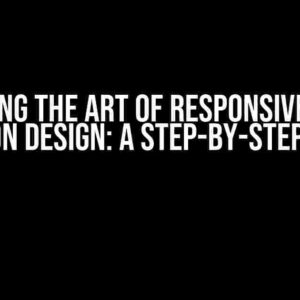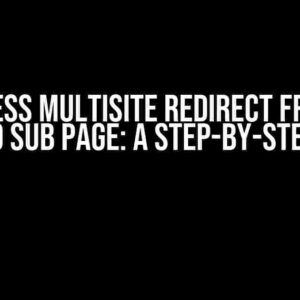Are you struggling to understand how to update a value in real-time using JavaScript’s `onChange` event and `setInterval` function? Look no further! In this article, we’ll delve into the world of dynamic value changes and explore how to make it happen seamlessly.
What is the onChange Event?
The `onChange` event is a JavaScript event that triggers when the value of an element changes. It’s commonly used with form elements, such as input fields, dropdown menus, and checkboxes, to detect changes made by the user. When an `onChange` event is triggered, a function is called to handle the new value.
For example, let’s say we have an input field that accepts a user’s name:
<input type="text" id="username" onChange="updateUsername(this.value)">In this example, the `onChange` event is triggered whenever the user types or edits their name in the input field. The `updateUsername` function is called with the new value as an argument, allowing us to process the updated name.
What is the SetInterval Function?
The `setInterval` function is a JavaScript method that executes a function at a specified interval (in milliseconds). It’s often used to create repetitive tasks, such as updating a timer or animation.
For instance, let’s say we want to update a clock every second:
setInterval(function () {
console.log(new Date().toLocaleTimeString());
}, 1000);In this example, the function inside `setInterval` logs the current time to the console every 1000 milliseconds (or 1 second).
Combining onChange and SetInterval: The Challenge
Now that we’ve covered the basics of `onChange` and `setInterval`, let’s explore the challenge of combining them. Imagine a scenario where we want to update a value in real-time using `onChange`, while also using `setInterval` to refresh the value at a set interval.
The problem arises when we try to update the value instantly using `onChange`, while also relying on `setInterval` to refresh the value at a set interval. This can lead to conflicts, as the `onChange` event may trigger before the `setInterval` function has a chance to update the value.
Solving the Challenge: Strategies and Solutions
Don’t worry, we’ve got you covered! Here are some strategies and solutions to help you overcome the challenge of combining `onChange` and `setInterval`:
Strategy 1: Debouncing
One approach is to debounce the `onChange` event, which means delaying the execution of the event handler until a certain amount of time has passed since the last event. This ensures that the `onChange` event is only triggered when the user has finished editing the value.
let timeoutId;
function updateValue(newValue) {
clearTimeout(timeoutId);
timeoutId = setTimeout(function () {
console.log("Updated value:", newValue);
}, 500); // 500ms debounce timeout
}
<input type="text" id="username" onChange="updateValue(this.value)">In this example, we’re using a timeout to delay the execution of the `updateValue` function by 500 milliseconds. If the user continues to type during this period, the timeout is cleared and restarted, ensuring that the function is only executed when the user has finished editing the value.
Strategy 2: Throttling
Another approach is to throttle the `onChange` event, which means limiting the number of times the event handler is executed within a certain time frame. This prevents excessive updates and ensures that the value is updated at a reasonable rate.
let throttleTimeout;
function updateValue(newValue) {
if (throttleTimeout) {
return;
}
throttleTimeout = setTimeout(function () {
throttleTimeout = null;
}, 1000); // 1 second throttle timeout
console.log("Updated value:", newValue);
}
<input type="text" id="username" onChange="updateValue(this.value)">In this example, we’re using a throttle timeout to limit the number of times the `updateValue` function is executed within a 1-second time frame. If the user continues to type during this period, the function is not executed until the throttle timeout has expired.
Strategy 3: Clearing the SetInterval
Another solution is to clear the `setInterval` function when the `onChange` event is triggered. This ensures that the value is updated instantly, while also preventing the `setInterval` function from interfering with the `onChange` event.
let intervalId;
function updateValue(newValue) {
clearInterval(intervalId);
console.log("Updated value:", newValue);
intervalId = setInterval(function () {
console.log("Refreshed value:", newValue);
}, 1000);
}
<input type="text" id="username" onChange="updateValue(this.value)">In this example, we’re clearing the `setInterval` function when the `onChange` event is triggered, and then restarting it with the new value. This ensures that the value is updated instantly, while also allowing the `setInterval` function to refresh the value at a set interval.
Best Practices and Considerations
When combining `onChange` and `setInterval`, it’s essential to consider the following best practices:
- Debounce or throttle the onChange event: This prevents excessive updates and ensures a smooth user experience.
- Clear the SetInterval function: This prevents conflicts between the `onChange` event and `setInterval` function.
- Use a reasonable interval: Choose an interval that balances real-time updates with performance and usability considerations.
- Test thoroughly: Ensure that your implementation works as expected across different browsers and devices.
Conclusion
In conclusion, combining `onChange` and `setInterval` can be a powerful way to update values in real-time. By applying the strategies and solutions outlined in this article, you can overcome the challenges associated with combining these two JavaScript functions.
Remember to debounce or throttle the `onChange` event, clear the `setInterval` function, and use a reasonable interval. By following these best practices, you can create a seamless and efficient user experience that updates values instantly and accurately.
| Strategy | Description |
|---|---|
| Debouncing | Delaying the execution of the onChange event handler until a certain amount of time has passed since the last event. |
| Limiting the number of times the onChange event handler is executed within a certain time frame. | |
| Clearing the SetInterval | Clearing the SetInterval function when the onChange event is triggered, and then restarting it with the new value. |
By applying these strategies and solutions, you’ll be well on your way to creating dynamic, real-time updates that enhance the user experience and set your application apart from the rest.
Happy coding!
Frequently Asked Questions
Get the scoop on how to handle the pesky situation where onChange value changes instantly while using setInterval!
Why does my onChange value change instantly when I’m using setInterval?
This happens because the onChange event is triggered whenever the value changes, and since you’re using setInterval, the value is being updated rapidly, causing the onChange event to fire instantly! It’s like a rollercoaster of value changes!
Is there a way to prevent the onChange event from firing instantly when using setInterval?
You can use a technique called “debouncing” to prevent the onChange event from firing instantly. Debouncing involves delaying the execution of the onChange event until the user has stopped interacting with the input field for a certain amount of time. It’s like a relaxation period for your code!
How can I debounce the onChange event when using setInterval?
You can use a library like Lodash’s debounce function or create your own debounce function using setTimeout and clearTimeout. The idea is to set a timeout for the onChange event to fire, and if the user continues to interact with the input field, the timeout is cleared and reset. It’s like a clever workaround to tame the beast of instant onChange events!
Can I use requestAnimationFrame instead of setInterval to avoid onChange events firing instantly?
Yes, you can! requestAnimationFrame is a more efficient and smooth way to update values, especially when working with animations. It’s like switching from a bumpy road to a silky-smooth highway! However, keep in mind that requestAnimationFrame has its own set of rules and limitations, so make sure to read up on it before making the switch.
What if I still want to use setInterval, but with a twist?
You can use a combination of setInterval and a flag variable to control when the onChange event is triggered. For example, you can set a flag to true when the user starts interacting with the input field, and then set it to false when the user stops. This way, you can control when the onChange event is triggered, even when using setInterval. It’s like adding a clever layer of control to your code!








